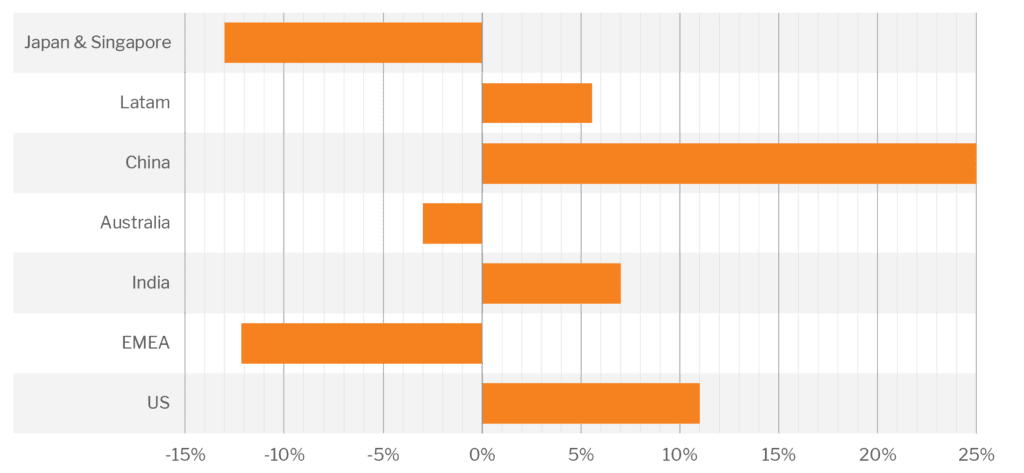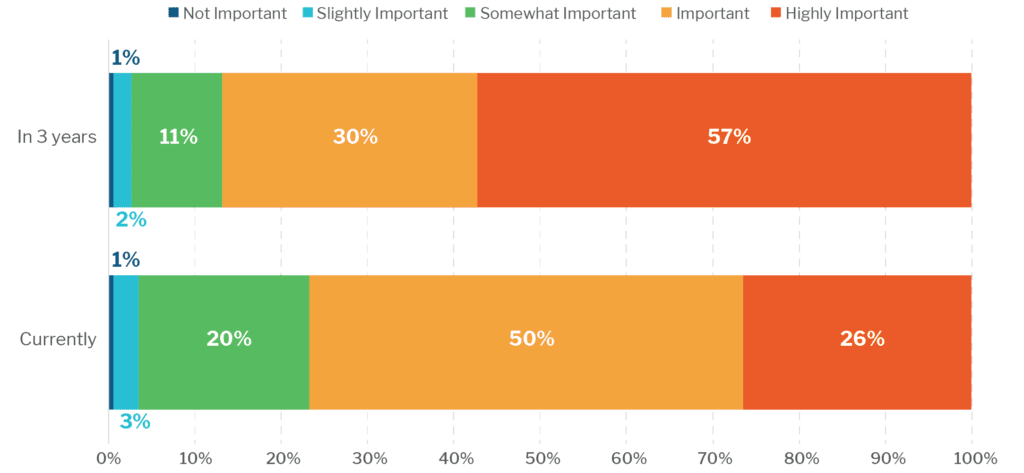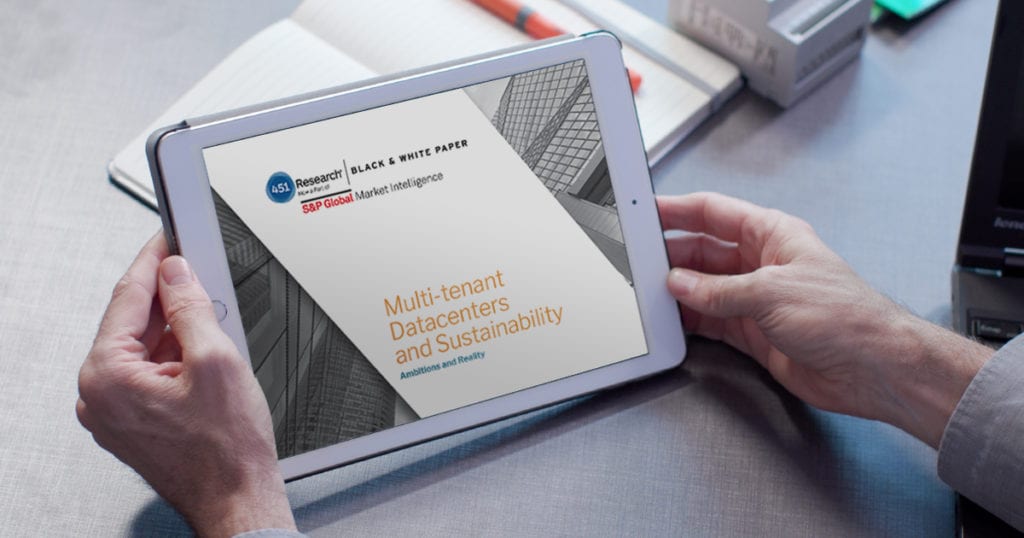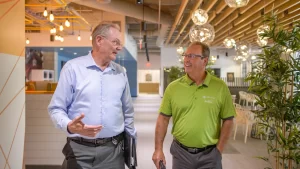With the prevalence of IT in all aspects of social and economic activities, datacenters have become major consumers of energy, and a still growing one at that. Consequently, global datacenter infrastructure is responsible for large amounts of greenhouse gas emissions (GHG). With the vast majority of large businesses needing to demonstrate transparency and progress in their annual sustainability reports, datacenters are coming under increased scrutiny to achieve carbon neutrality goals. Increasingly, ambitious sustainability goals and strong performance have become a prerequisite of winning business.
As with any mission-critical operation, datacenters are primarily about managing various risks to service continuity and weighing them against the costs of protective measures. Environmental sustainability adds a new dimension to that balancing act. Current and future regulations can expose datacenter operators to higher costs and operational risk in the form of restrictions on key products (for example legacy refrigerants, mineral fuel types), or extra charges for being out of compliance. Regulations and extreme weather events might also force technical changes not planned for, injecting previously unforeseen risks to the operation.
But sustainability comes with a twist: is it possible to reduce associated risks and costs at the same time, and better yet, attract customers in the process? This is in great part why large parts of the leased datacenter services market (generally retail colocation and wholesale) view sustainability as strategic and considered the next big thing for competitive differentiation. In a survey of more than 800 datacenter service providers around the globe conducted by 451 Research (part of S&P Global Market Intelligence) in the first months of 2020, 43% said to have strategic initiatives in place that take a comprehensive view of sustainability of their datacenter operations. While there is still ample room for improvement here, this is a strong showing, we believe, particularly in comparison to enterprise datcenter operations. Datacenters are at the very core of the business for datacenter services providers, while enterprise infrastructure typically struggles for the attention and resources of the company.
Download the Report:Multi-tenant datacenters and sustainability – amibtions and reality
451 Research found that responses differed considerably by region more than other factors. Over half of US operators said they have such strategic programs in place compared to less than a third in EMEA. The strongest major region was China with more than two-thirds of the participants responding positively. The greatest explanations for this are competitiveness of the market and the size of buyers: the bigger the customer is, the more likely it will stipulate stringent efficiency and sustainability conditions to couple low cost with low environmental harm, and the bigger the market is, the more choices such major – typically more sophisticated – customers will have to give more weight to sustainability considerations.
Figure 1 – Regional differences in strategic approach to efficiency and sustainability, compared to global average (% points).

The survey confirms this. The most prominent factor driving efficiency and sustainability initiatives through the organization is the customer. About half of surveyed datacenter services providers included customer requirements as one of the top factors, as buyers expect contractual commitments in growing numbers. The data supports the argument that sustainability has moved on from being ‘a nice thing to do’ to being critical in winning (and probably retaining) business.
In fact, 57% of respondents surveyed think efficiency and sustainability will be highly important to their organizations’ competitive differentiation in 3 years, up from the current reading of 26%. This is good news for everyone: the financial interests of commercial datacenter operators align with sustainability goals, rather than frustrating each other.
Figure 2 – How would you rate the importance of efficiency and sustainability to your organization’s competitive differentiation, currently and in three years?

Along with customer requirements, long-term operational resiliency also scored high as a motivator as the effects of climate change, such as heatwaves, droughts, fires or floodings become more pronounced. An efficient and well-maintained datacenter that uses less electricity and water is not only good for the environment but is also likely to be in a better position to survive extreme weather events. For the full list of top sustainability drivers at datacenter services providers, download and read the full report.
Optimizing and upgrading the power infrastructure is the most common area of investment in efficiency and sustainability initiatives, particularly with larger operators, both near term and over a 24-month horizon. This is not just about advanced electrical design and the latest high-efficiency power equipment, but better management too. Balancing the load across power systems and re-evaluating power capacity requirements based on actual load measurements, as opposed to taking nominal power capacity of IT system power supplies, should free up stranded power and help drive utilization higher, lowering the unit cost of capacity for customers, and generating more revenue for the provider. This has been driving the adoption of smart (connected) power distribution units along the power chain, myriads of environmental sensors, and advanced DCIM tools with highly automated data collection and complex analytics.
The datacenter sector has reached a technology chasm in how it designs, builds and operates infrastructure. If operators and their customers are to continue their progress toward carbon-neutrality, more dramatic changes – more akin to a leap – are necessary. New battery chemistries such as Li-ion in support of compressed footprint and more dynamic power controls, scaled adoption of direct liquid cooling rather than air, and a tighter orchestration of facilities and IT resources in unison are key technology components of the future. Service providers are also becoming interested in more low-carbon electricity generation, with about a third saying they are actively considering investing in on-site power capacity.

The 451 Research survey shows that datacenter operators are already focused on efficiency and sustainability, largely because it already is a key factor in their ability to sign up customers, and they expect it to become even more important. Pressure from customers as well as regulators and the broader public will only mount as the consequences of climate change become clearer with time. Operators will also increase their efforts, not least to safeguard the resiliency of their sites against adverse climatic effects. Ultimately, sustainability is not only good looks, but it is also good business.
Read the full report for more details about the perspectives on sustainability from datacenter services providers and the role their companies will take with sustainability.



